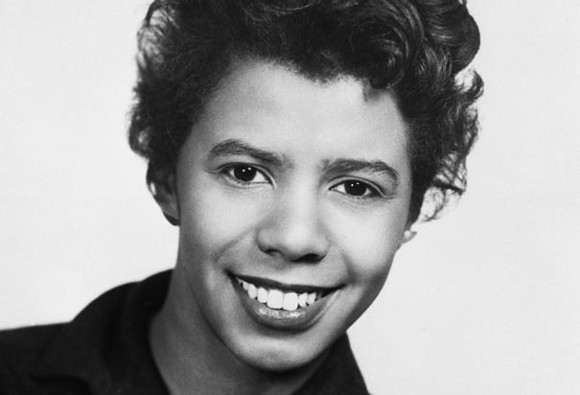
The granddaughter of a freed slave, Lorraine Vivian Hansberry was born on May 19, 1930, to a successful real estate broker and a school teacher who resided in Chicago, Illinois. In 1938, the family moved to a white neighborhood and was violently attacked by its inhabitants but the former refused to vacate the area until ordered to do so by the Supreme Court where the case was addressed as Hansberry v. Lee.
Breaking her family’s tradition of enrolling in Southern Black colleges, Hansberry took admission in the University of Wisconsin in Madison, changing her major from painting to writing. However, Hansberry only attended university for two years before dropping out and moving to New York City where she went to the New School for Social Research.
While working as a part-time waitress and cashier, Hansberry worked as the writer and associate editor of the black newspaper, Freedom, from 1950 to 1953 under Paul Robeson. Three years later, Hansberry devoted all her attention towards writing joining the Daughters of Bilitis the year after. For their magazine, the Ladder, Hansberry contributed articles which talked of feminism and homophobia, revealing her homosexual nature. However, the writer adopted the initials of L.H. in order to avoid discrimination.
Hansberry wrote her first play, The Crystal Stair, during the same period, based on a struggling family in Chicago. The play was later renamed A Raisin in the Sun and was a great success at the Ethel Ballymore Theatre, having a total of 530 performances. The play was the first one to be produced on Broadway by an African-American woman and won an award at the Cannes Film Festival when its motion picture came out. The production also led Hansberry to become the first black playwright and the youngest American to win a New York Critics’ Circle Award.
Lorraine Hansberry became involved in the Civil Rights Movement in 1963 and joined people like Lena Horne and James Baldwin to test Robert Kennedy’s position on civil rights. In the same year, her second play, The Sign in Sidney Brustein’s Window, was released on Broadway but was unable to become a major hit.
In the same year, Hansberry was diagnosed with pancreatic cancer which took her life at a mere age of 34. After the writer’s demise in 1965, her ex-husband, Nimroff, adapted a collection of her writings and interviews in To Be Young, Gifted and Black, which opened off at Broadway at the Cherry Lane Theatre and ran for a period of eight months.
Even though her disease brought her career to an abrupt halt, Lorraine Hansberry continues to be remembered through the paintings and writings which she worked on in the early years of her career. Her first play, A Raisin in the Sun, continues to be her most influential piece and has managed to find new audiences through the decades, wining Tony Awards in 2004 and 2014 and also the title of Best Revival of a Play.
In 2013, Hansberry was also inducted into the Legacy Walk, making her the first Chicago-native to receive the honour, along with a position in the American Theatre Hall of Fame in the same year. The late artist also has a school, Lorraine Hansberry Academy, in the Bronx named after her as well as an elementary school in Queen, New York, titled in her honor.
